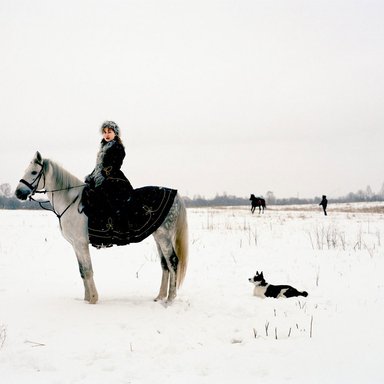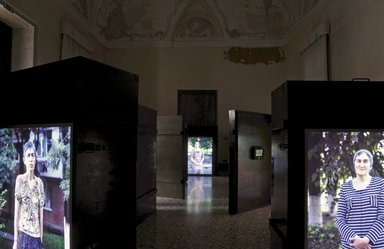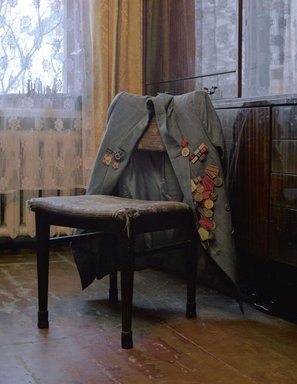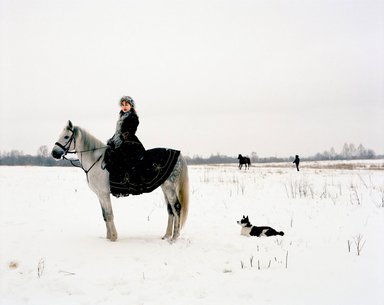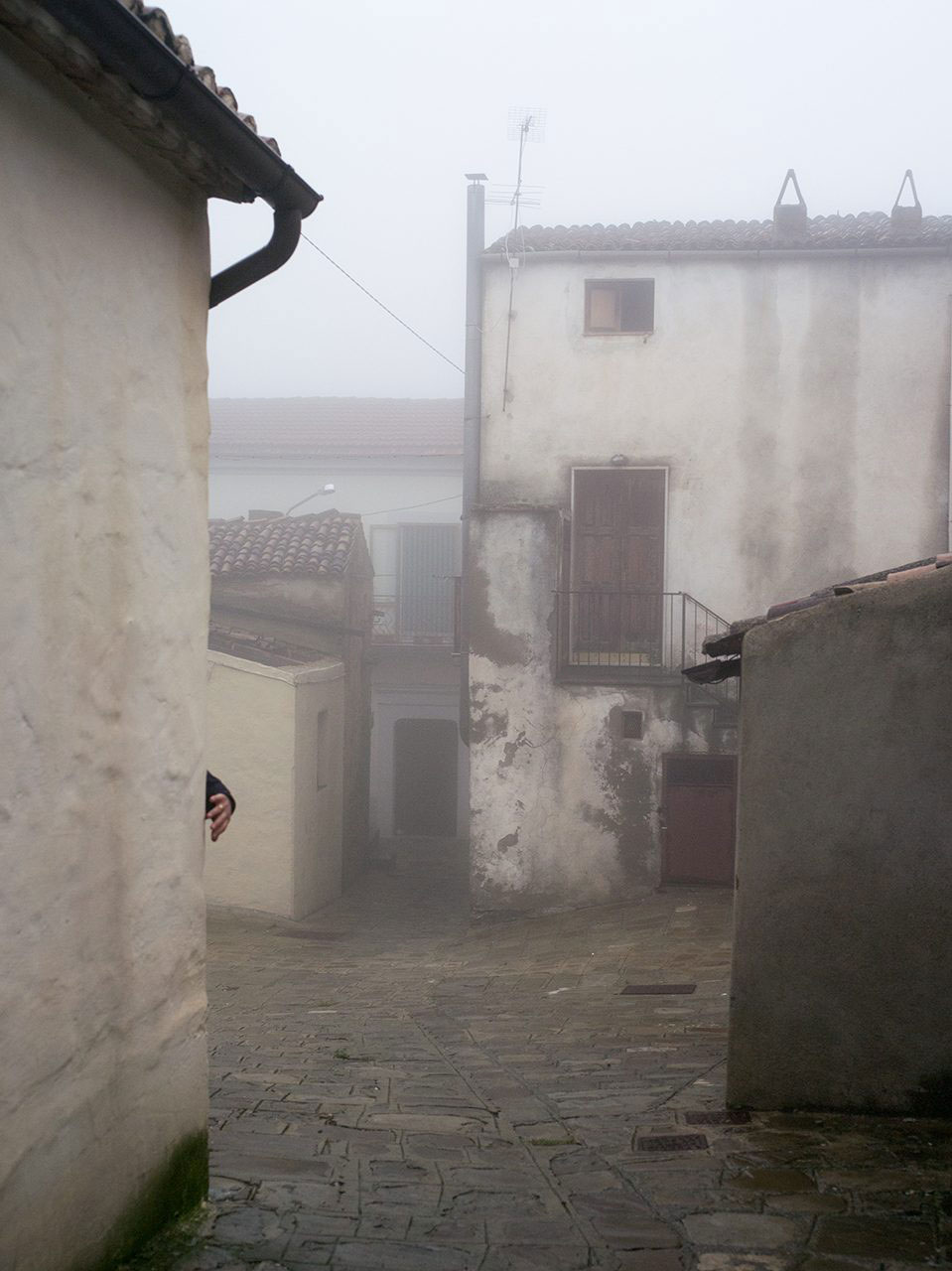Anastasia Khoroshilova | Starie Novosti (Old News) (2011)
Anastasia Khoroshilova | Starie Novosti (Old News) (2011)
Anastasia Khoroshilova’s installation Starie Novosti (Old News) is currently to be seen in Venice at the historic Zenobiana Library, built in 1777 by Tommaso del Temanza. In stark contrast to the fresco painted in subdued pastel colours on the ceiling of the plush loggia, you find nine photo light boxes (100 x 80 x 15 c m) formally reminiscent of both skyscraper architecture and military or expedition cases. Moreover, the international designations visible on them give the works “obviously” brought and deposited here the transport character of a temporary temporality. Nearly life¬size portraits of women, in richly contrasting colours, show mothers from the town of Beslan in the Caucasus who lost their children during the tragic hostage¬taking at the school in North Ossetia (Russian Federation) in September 2004 (by Dr. Jeanette Zwingenberger)
Format:
Photo / Video
